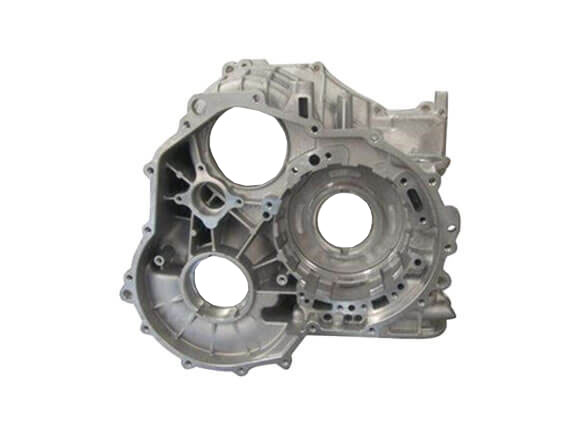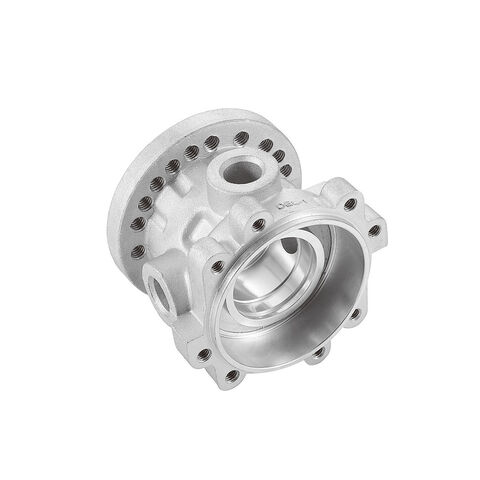Discover How advanced technology enhances Precision aluminum casting today
Wiki Article
Discovering the Duty of Light Weight Aluminum Casting in the Evolution of Industrial Production
Aluminum spreading has played an essential role in forming modern-day industrial production. Its durable and light-weight nature has transformed the manufacturing of elements for different sectors, consisting of auto and aerospace. With innovations in casting strategies, the sector has seen enhancements in accuracy and performance. As sustainability comes to be increasingly important, the recyclability of light weight aluminum includes one more dimension to its value. What effects does this have for the future of producing methods?The Beginnings of Aluminum Casting
Light weight aluminum casting has a rich history that goes back to the late 19th century when the adaptability of aluminum was initial recognized. This lightweight steel was considered testing to function with due to its high melting point and sensitivity to oxidation. Innovative minds started to explore its capacity, leading to the advancement of different casting techniques. The introduction of aluminum right into industrial applications marked a substantial pivotal moment in production, permitting for the production of complex elements that were formerly unattainable with other steels. By the very early 20th century, aluminum spreading had actually gained grip in different fields, from automobile to aerospace, owing to its strength and light-weight homes. The establishment of shops and the emergence of light weight aluminum alloys better moved its appeal, establishing the phase for future innovations. The beginnings of aluminum spreading laid the groundwork for its integral duty in modern industrial production.Secret Improvements in Aluminum Spreading Techniques
Recent innovations in aluminum casting methods have markedly transformed industrial manufacturing. Innovations in die casting procedures have enhanced accuracy and performance, while the evolution of sand casting has improved convenience and cost-effectiveness. These developments are improving the landscape of light weight aluminum manufacturing and broadening its applications throughout numerous fields.Pass Away Spreading Innovations
As markets venture for improved effectiveness and product quality, die casting has become a centerpiece for advancement in aluminum casting strategies. Recent improvements have actually concentrated on boosting mold and mildew layout, temperature level control, and material residential or commercial properties, markedly reducing cycle times and raising accuracy. The intro of computer-aided layout (CAD) and simulation software has allowed manufacturers to optimize pass away geometries and forecast prospective problems prior to production. Additionally, the integration of automated systems has structured process, enhancing uniformity and lowering human mistake. Advancements such as vacuum pass away spreading and semi-solid metal casting have actually even more enhanced the mechanical residential or commercial properties of light weight aluminum elements, leading to lighter, more powerful products. These innovations setting pass away spreading as a crucial element in the affordable landscape of contemporary manufacturing.Sand Casting Development
Developments in light weight aluminum casting techniques have actually not been limited to die spreading; sand casting has actually likewise undertaken considerable advancement. Traditionally reliant on hand-operated procedures, modern-day sand casting has welcomed automation and digital innovations, boosting effectiveness and precision. Advancements such as computer-aided design (CAD) permit more detailed mold and mildew layouts, while 3D printing of sand molds has changed production times and lowered product waste. Furthermore, the intro of innovative sand mixes improves the surface coating and mechanical residential properties of actors components. These growths not just lower production expenses but likewise increase the extent of applications for sand-cast aluminum products. As industries demand higher high quality and faster turnaround, the development of sand spreading continues to be crucial in meeting these modern manufacturing difficulties.The Effect of Aluminum Casting on the Automotive Market
Light weight aluminum spreading has actually revolutionized the automobile sector by making it possible for the production of light-weight parts that enhance vehicle efficiency. These advancements contribute significantly to improved fuel efficiency, aligning with environmental standards and consumer demands (Aluminum Foundry). In addition, the convenience of light weight aluminum spreading promotes design flexibility, permitting cutting-edge techniques in automobile manufacturingLightweight Part Benefits
The automobile industry has actually progressively embraced light-weight elements to enhance gas effectiveness and performance. Aluminum spreading has emerged as a crucial innovation in this shift, permitting producers to produce components that are not only lighter but also structurally durable. These lightweight components add to boosted automobile dynamics, enabling far better handling and acceleration. In addition, light weight aluminum's corrosion resistance lengthens the lifespan of auto parts, reducing upkeep costs gradually. The versatility of aluminum casting permits for elaborate designs that were previously unattainable, promoting development in lorry aesthetics and performance. As auto producers proceed to prioritize sustainability, making use of lightweight light weight aluminum cast components lines up with initiatives to reduce general lorry weight, marking a considerable innovation in automobile engineering.Boosted Gas Performance
As the auto industry seeks ingenious means to enhance fuel effectiveness, light weight aluminum casting has actually arised as a pivotal service. The light-weight homes of light weight aluminum greatly decrease lorry weight, leading to improved fuel economic climate. By replacing much heavier materials with aluminum cast elements, suppliers can enhance engine performance and decrease power consumption. This shift not only helps in decreasing greenhouse gas discharges however likewise lines up with worldwide sustainability goals. Furthermore, light weight aluminum's outstanding thermal conductivity enables much better warm dissipation in engines, even more improving performance and efficiency. As a result, vehicles making use of light weight aluminum cast components can attain greater miles per gallon, attracting eco-conscious consumers and meeting stringent regulatory criteria. This advancement emphasizes light weight aluminum's essential role in the future of automotive production.Layout Adaptability and Technology
While typical materials commonly enforce limitations on layout, aluminum casting supplies unmatched adaptability that promotes innovation in the auto market. This adaptability permits makers to produce complex geometries and detailed functions that were previously unattainable. Lightweight aluminum elements can be tailored to meet details performance demands, improving both car performance and visual appeals. Furthermore, the casting procedure supports quick prototyping, enabling quicker models and decreasing time-to-market for brand-new designs. As car manufacturers progressively prioritize sustainability, light weight aluminum's recyclability complements layout initiatives, advertising environment-friendly methods. Overall, light weight aluminum casting encourages developers and designers to push the borders of creative thinking, causing the development of advanced lorries that fulfill contemporary consumer needs for efficiency, security, and environmental duty.Technologies in Aerospace With Light Weight Aluminum Spreading
Aluminum casting has changed the aerospace industry by allowing the production of light-weight yet very sturdy components. This advancement permits the production of complex shapes that conventional production techniques can not attain, leading to enhanced performance and performance in airplane design. Key applications consist of engine parts, architectural parts, and intricate assemblies that profit from light weight aluminum's excellent strength-to-weight ratio.Furthermore, developments in casting methods, such as high-pressure die spreading and financial investment casting, have enhanced dimensional accuracy and surface finish, decreasing the requirement for considerable machining. These advancements improve production processes, lower preparations, and reduced manufacturing costs, making aluminum parts increasingly interesting aerospace designers
Furthermore, the capability to integrate numerous functions into a solitary actors part decreases setting up time and potential factors of failure. Consequently, light weight aluminum casting proceeds to play an essential function ahead of time aerospace modern technology, adding to the development of much safer, much more reliable, and ecologically pleasant airplane.
Sustainability and Ecological Benefits of Light Weight Aluminum Casting
The aerospace sector's change toward aluminum casting not only boosts Aluminum Casting Company performance yet likewise contributes favorably to sustainability efforts within commercial production. Aluminum casting deals significant ecological benefits, largely due to light weight aluminum's intrinsic recyclability. Approximately 75% of light weight aluminum produced is still being used today, showcasing its possibility for circular economic situation methods. Moreover, the energy called for to recycle aluminum is considerably reduced-- approximately 95% less-- compared to generating new aluminum from ore.Additionally, light weight aluminum casting processes frequently create much less waste, as advanced techniques permit for the efficient use of materials. This minimizes the environmental impact associated with production. The lightweight nature of light weight aluminum likewise leads to more fuel-efficient aircraft, decreasing greenhouse gas exhausts during operation. In general, the assimilation of light weight aluminum spreading in commercial manufacturing not only supports ingenious layout and functionality yet additionally lines up with global sustainability objectives, making it a critical option for ecologically conscious markets.
The Future of Aluminum Casting in Manufacturing

In addition, innovations in alloy development are expected to enhance the homes of actors aluminum, making it lighter and much more resilient. These improvements will certainly not only meet the growing needs of industries like auto and aerospace but also add to environmental objectives by minimizing energy usage. Inevitably, the future of aluminum casting in production appears positioned for a paradigm change, driven by technology's ability to innovate and optimize producing processes
Often Asked Concerns
How Does Aluminum Spreading Contrast to Various Other Metal Casting Procedures?
Aluminum casting offers benefits such as lower weight, boosted deterioration resistance, and much better thermal conductivity contrasted to other metal spreading procedures. It might be less suitable for high-temperature applications than materials like steel or iron.What Are the Main Safety Problems in Aluminum Casting?
The major safety problems in aluminum casting consist of direct exposure to molten steel, possible burns, breathing of hazardous fumes, and dangers related to equipment procedure. Appropriate safety procedures and personal safety equipment are necessary to mitigate these hazards.Can Light Weight Aluminum Spreading Be Made Use Of for Artistic Purposes?
Aluminum casting can without a doubt be utilized for artistic functions. Artists typically value its versatility, lightweight nature, and ability to record detailed information, enabling for the production of both attractive and practical pieces that showcase imagination and craftsmanship.What Are the Costs Connected With Aluminum Casting?

Exactly How Has Aluminum Spreading Influenced Global Production Trends?
Aluminum casting has actually significantly influenced international production patterns by offering light-weight, long lasting elements, reducing manufacturing expenses, and enhancing layout versatility. Its adoption across different sectors has streamlined procedures and promoted advancement, forming contemporary production techniques worldwide.Light weight aluminum casting has an abundant history that dates back to the late 19th century when the versatility of light weight aluminum was first acknowledged. As sectors endeavor for improved efficiency and product top quality, die spreading has arised as a focal factor for advancement in aluminum casting strategies. Advancements such as vacuum pass away casting and semi-solid steel casting have further boosted the mechanical residential properties of aluminum parts, leading to lighter, stronger products. Improvements in light weight aluminum casting strategies have not been restricted to die casting; sand casting has additionally undergone substantial evolution. Light weight aluminum casting deals considerable ecological advantages, primarily due to light weight aluminum's fundamental recyclability.
Report this wiki page